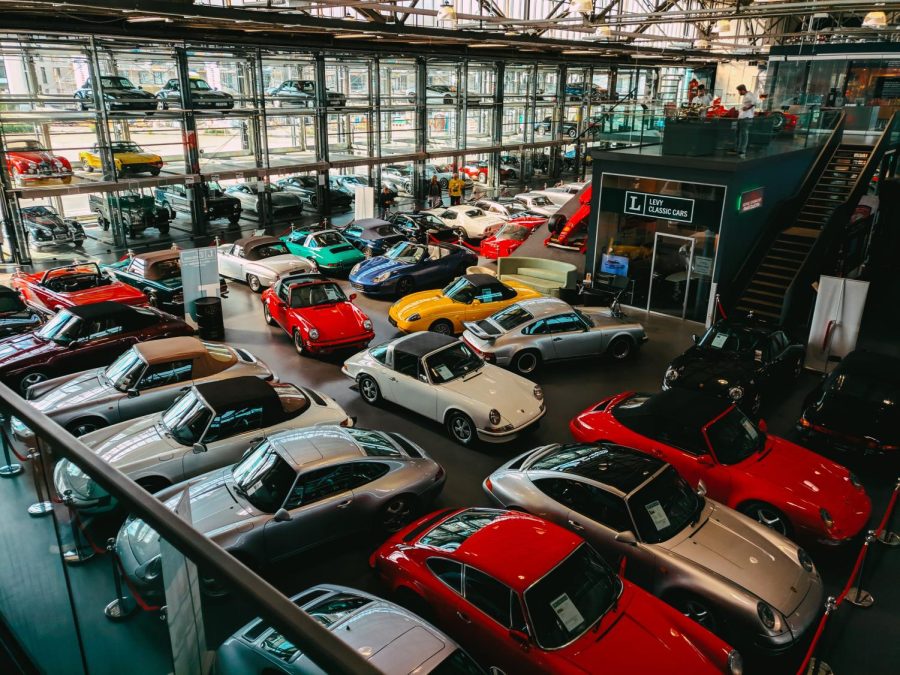Why Used Cars are MORE Expensive Than New Cars
In this upside-down economy, there seems to be some funny business with the car market. As a seventeen-year-old going into my senior year of high school, I plan to drive more often. My parents like the idea of another helping hand for driving and taxiing my siblings. So, instinctively, we headed to the nearest car dealerships and were surprised by the astronomical prices and hefty markups in the used car lot, as well as in the new one.
After speaking to specialist after specialist, at dealership after dealership, we found the problem. With new cars being technologically advanced, they require more intricate systems; semiconductor chips are what make your car’s electronics function and they are in worldwide demand. The new technologically complex cars require more of these chips as well as all other advancing manufactured technologies that are not distributed fast enough to meet the demand of car manufacturers.
Shortages, Shortages, Shortages:
With the pandemic lockdown, the car market sank, and production fell with it. In addition, used cars had low mileage on them and more value. As the lockdown hit, demand for technology soured more than years passed with people now working, learning, and living at home. Technology became the solution for all of life’s needs and quarrels. At the same time, the companies producing and distributing these materials struggled to meet the rising demand amid Coronavirus safety concerns and widespread shutdowns of factories that produced the chips. When the pandemic hit, orders were canceled for parts and chips that car manufacturers would typically need. However, when the lockdown ended, people left the house to return to regular life and those orders were required again.
In short, the semiconductor chips went months behind production schedule because replacing orders for these chips and parts requires lots of time and money to ramp up production. In addition to the chips, the cars need other hardware and parts that come from all over the world. Outside of taking lots of time and money to get back to full production, there were other reasons for the delay: weather and war. With rising droughts, stronger storms, and harsh heat, countries are facing serious dangers and delays in production. Last year, Texas’s cold snap shut down all five of the petrochemical plants that produce car foam, which slowed down car seat production for a few months, and overseas, multiple floods hit Thailand in 2020, taking lives and making it hard for rubber farmers to meet demand. But with the global conflict between Russia and Ukraine, things get even worse.
What is just as important as a microchip is what connects and communicates everything together—its wiring harness. Of course, a considerable amount of wiring harnesses are made in Ukraine, and upon Russia’s invasion, they damaged the connection between Ukraine’s 38 plants that mostly produce wiring harnesses for 22 automotive companies. All of this delay and danger pulled customers towards the used car market, causing it to rise steeply in value.
As you enter the dealership or check the websites, you will notice the messages that essentially say, “due to high demand or volume of sales, you will not be getting this car any time soon”. You will now be on your way to the used cars since you do not want to wait forever but will notice that the prices are absurd. For example, a red Sport Honda Civic 2019 with over twenty-six thousand miles costs almost $27,000 while a new version of the car would start at around $21,000 at the time of purchase (before taxes and other fees). There is a significant markup and it benefits sellers but is awful for buyers. Most used cars sell for the same as sold or more, which has never been seen.
The electric car market is even more hectic than the gas car market because electric cars are not as widespread in manufacturing, and are more technology-based, which means they need extra semiconductor chips that are in hot demand. Due to the demand for electric cars and their limited supply, Tesla drastically raises prices. The Tesla Model 3, Elon Musk’s economy car, was launched with the promise of a $35,000 start price, but now the base Model 3 Rear-Wheel Drive starts at $48,000. In addition, they raised prices for the full self-driving feature. Just a few years ago, you could pay the staggering $2,500 for a full self-drive, and now Musk charges $15,000. Tesla can meet demand the best out of all of the competition and is the most powerful maker in the car market, so raising costs does not seem like a problem for them. In addition, buying one of their used models is more expensive than their new models. If I wanted a Model 3 Long Range, I could wait until 2023 to place my $60,000 order or I can pay over $70,000 for a used 2021 Model 3.
The Shady Side Of The Used Car Market:
While all of these delays and supply chain issues are raising costs for new as well as used cars, there is something a bit sinister happening that most customers are not aware of. The Youtube channels Donut Media, Lucky Lopez, and Andrei Jikh state a theory that most independent dealerships are being bought out, if they are not already, by a few large companies that are now fully responsible for selling most of the used cars. With fewer cars in stock and a limited number of places to buy them, prices have surely gone up for that reason, right? With this almost monopoly, these large dealerships can sell cars at whatever price they want since they are buying from the manufacturers.
Although some dealerships are punished by getting sent fewer cars from manufacturers, the dealerships are winning. Haig Partners found that “the average gross profit per new vehicle sits at $6,244. That is a whopping 180 percent increase from pre-pandemic levels in 2019, and with supply chain problems still a major issue due to COVID-19 and the chip shortage, the trend is expected to continue through this year at the very least”. In addition to charging more, the report estimates that public-owned car dealerships returned an average profit of $7.1 million over the most recent 12 months, which represents an increase of 242 percent compared to the pre-pandemic 2019.
A large portion of the cars being sold is cars repossessed rather than traded, which is partly because banks were giving out loans without verifying people’s incomes—reminiscent of the 2008 recession. When the cars are repossessed, they go to wholesale car auctions where dealerships go to bid. The car auctions sell them in slow amounts to keep the supply lower so they can make more profit, artificially influencing demand. Cox Automotive is not the only company doing this.
First, the auction houses tell the dealer how much they are going to pay for the car. Then, Kelley Blue Book tells the bank how much money the person can loan for the car, and then, Autotrader tells the customer how much they are going to pay. However, all three of these companies are owned by the same parent company, Cox Automotive. Their vertical integration allows them to overcharge customers and monopolize the system.
Looking Into The Future:
With the short supply of semiconductor chips and other parts, growing dangers and conflicts, and endless corporate greed, will prices return to normal? Skeptics believe that the market will return to normal within a year or two, and I agree. If nothing bad happens in the next few years with the production or distribution of these parts, car manufacturing should return to normal. If we invest in these industries as a country, becoming stronger in production like Taiwan and China, we can prevent shortcomings in its supply chains and have a far greater influence over the global marketplace. Expanding funding, government incentives, and wide-scale production for these semiconductor chips and parts will allow for a higher standing for the United States economy and make us less reliant on other countries for these important parts. For disreputable business practices, we must look to government intervention to prevent monopolies and tragedies of the commons. We must push these dealers to lower prices, so people can have access to cheaper cars.
I am in Advanced Placement Environmental Sciences this year and we are using the tragedy of the commons a lot. Since dealerships and companies are exploiting our strange times, customers now have less accessibility to cars. If one party exploits these resources then all others struggle and need to either work around the issue or miss out on the resource.

Harrison is a senior and is excited for his fourth year at the Harriton Banner. In addition to the Banner, Harrison also runs the Business Journal for...


